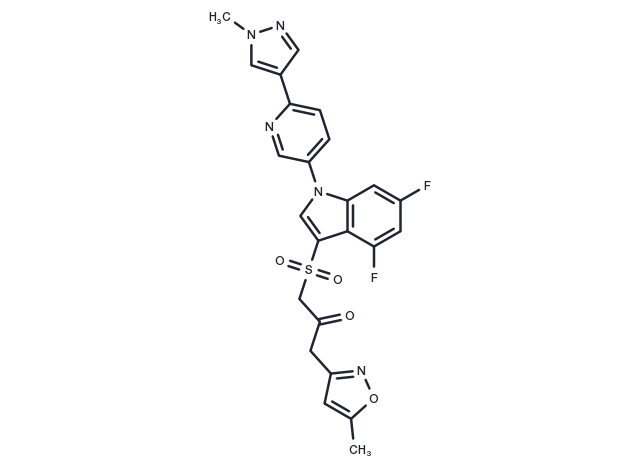Powder: -20°C for 3 years | In solvent: -80°C for 1 year


VU0456940 is a potent M1 PAM with excellent selectivity (hM1 EC50 = 340 nM, 14-fold leftward shift of the ACh CRC; hM2–hM5 inactive). VU0456940 potentiated the excitation of a subthreshold concentration of CCh in MSNs. VU0456940 shifted APP processing and engaged the nonamyloidogenic pathway inducing the release of sAPPα in the presence of a 100 nm CCh dose (displayed no activity in the absence of CCh).

| Pack Size | Availability | Price/USD | Quantity |
|---|---|---|---|
| 100 mg | Inquiry | Inquiry | |
| 500 mg | Inquiry | Inquiry |
| Description | VU0456940 is a potent M1 PAM with excellent selectivity (hM1 EC50 = 340 nM, 14-fold leftward shift of the ACh CRC; hM2–hM5 inactive). VU0456940 potentiated the excitation of a subthreshold concentration of CCh in MSNs. VU0456940 shifted APP processing and engaged the nonamyloidogenic pathway inducing the release of sAPPα in the presence of a 100 nm CCh dose (displayed no activity in the absence of CCh). |
| Synonyms | VU-0456940, VU 0456940 |
| Molecular Weight | 511.5 |
| Formula | C24H19F2N5O4S |
| CAS No. | T35080 |
Powder: -20°C for 3 years | In solvent: -80°C for 1 year
You can also refer to dose conversion for different animals. More
bottom
Please see Inhibitor Handling Instructions for more frequently ask questions. Topics include: how to prepare stock solutions, how to store products, and cautions on cell-based assays & animal experiments, etc.
VU0456940 T35080 VU-0456940 VU 0456940 inhibitor inhibit
